Great Design Plant: Solidago Speciosa
http://www.decor-ideas.org 09/20/2015 00:14 Decor Ideas
Showy goldenrod (Solidago speciosa) is the first native goldenrod that I grew at home. Though its rather dull green foliage blends in with other plants through the summer, tall, upright golden plumes stand up and out in late summer and early fall, clearly differentiating this plant from the more common roadside goldenrods with their arching forms.
Showy goldenrod is also a great pollinator plant. While most flowers attract bees and butterflies when they are in full sun, I’ve seen bees all over these flowers in shade, both early and late in the day.
Not in the eastern U.S.? Browse plants native to other regions of the U.S.
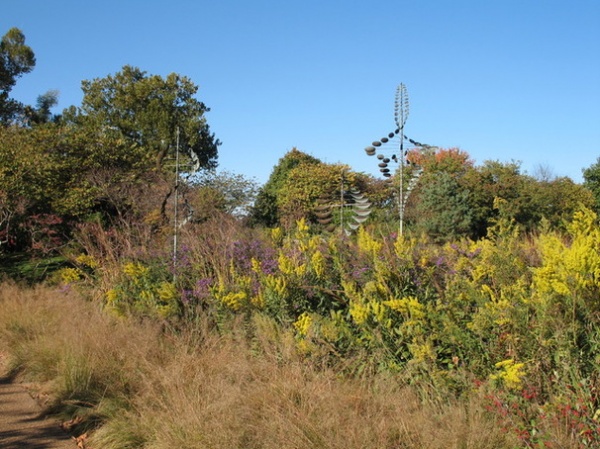
Shown: Showy goldenrod and New England aster (Symphyotrichum novae-angliae) combined in a prairie garden setting
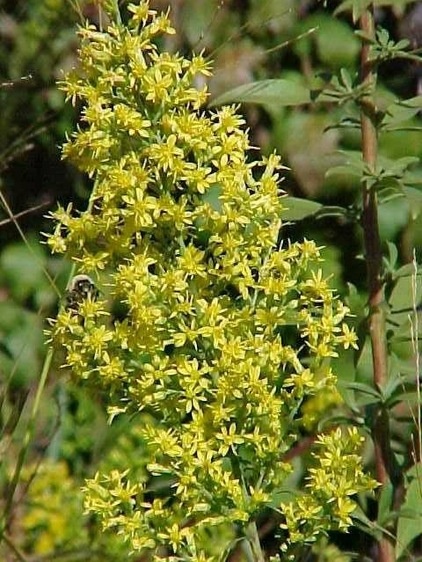
Botanical name: Solidago speciosa
Common name: Showy goldenrod
Origin: This widely distributed species has a native range from New Hampshire south to Georgia in the east and westward through the Great Plains to Wyoming and New Mexico; it is often found growing in old or abandoned fields, woodland edges and forest openings
Where it will grow: Hardy to minus 35 degrees Fahrenheit, or minus 17 degrees Celsius (USDA zones 3 to 9; find your zone).
Water requirement: Moderately dry to moderately moist soils; can spread aggressively in moister soils
Light requirement: Full to partial sun; plants will lean toward sunlight if it’s predominantly from one direction
Mature size: 2 to 5 feet tall and typically about 2 feet wide. There is a fair amount of size variability among the species, depending on where the plants originated and growing conditions. Do not fertilize showy goldenrod, or it will grow taller and begin to flop over.
Benefits and tolerances: I’ve seen deer browse new plants from the nursery, with less damage on established plants. Prefers well-drained loam soil but will also establish itself in clay soils; tolerates dry soils and periods of drought once established. Attracts birds, butterflies and native bees.
Shown: Close-up of a flower stalk showing the individual flowers
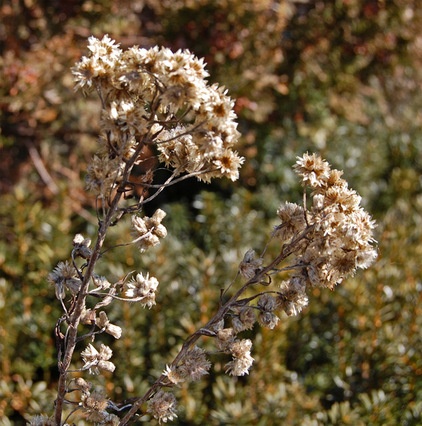
Seasonal interest: Its blooming period starts in late summer and lasts about a month — one of the later blooming goldenrod species. The spent flower heads are fairly robust, and the sepals can remain intact well into winter
When to plant: Transplants and divisions are best done in the spring to early summer; plants put in during fall may not have time to establish roots before a freeze. Seeds can be planted outside in the fall or started indoors under lights after 60 days of cold, moist stratification. The tiny seeds need light to germinate and should be planted on the soil surface, then pressed down to ensure good contact with the earth.
Shown: Showy goldenrod’s spent flowers in January, still holding up after three months
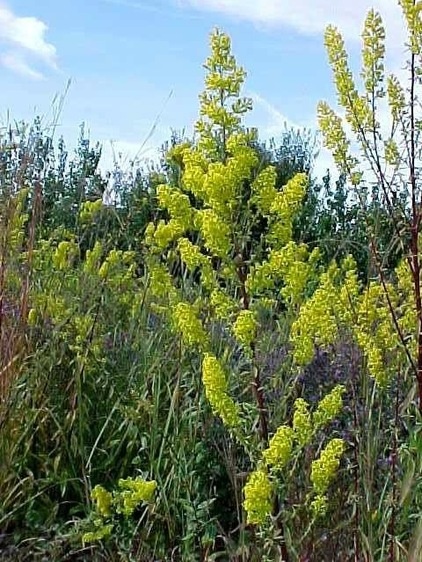
Distinguishing traits. While many goldenrod species have wide, spreading flower clusters, showy goldenrod holds its flowers in an upward, curving panicle. The result is a foot-long plume of golden flowers covering the end of each stem. The ¼-inch-wide flowers are on the large side for goldenrods. Some forms of this plant have striking reddish stems, but most of the plants I have encountered have green stems. These plants have relatively heavy pollen and are not the cause of fall hay fever — pollen allergies in the fall are due to wind-borne pollen from grasses and ragweed.
The plants spread by rhizomes (underground stems) and form rosettes of leaves that often overwinter. Vertical growth begins in the spring, forming an upright stem with many leathery dull green leaves.
Shown: A red-stemmed showy goldenrod in bloom
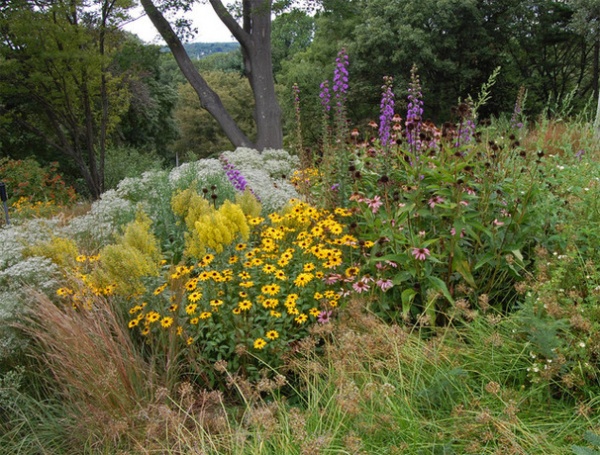
How to use it. These upright golden flowers blend well with the blue and purple flowers of later-blooming liatris, such as northern blazingstar (Liatris scariosa), or early-blooming asters. In my mid-Atlantic garden I am seeing showy goldenrod beginning to bloom at the same time as ‘October Skies’ aromatic aster (Symphyotrichum oblongifolium ‘October Skies’) and New England aster (Symphyotrichum novae-angliae). Since it can get aggressive in rich, moist soils, it needs to be managed carefully in a formal planting or just set loose in the middle or back of a naturalistic design.
This photo was taken in early September in the wildflower meadow at Mount Auburn Cemetery in Cambridge, Massachusetts. Species shown in this photo include New England blazingstar (Liatris scariosa var. novaeangliae), showy goldenrod (Solidago speciosa), purple coneflower (Echinacea purpurea), yellow coneflower (Rudbeckia sp.) and the white, cloud-like hyssop-leaved boneset (Eupatorium hyssopifolium). In the foreground are little bluestem and seed heads of nodding onion (Allium cernuum).
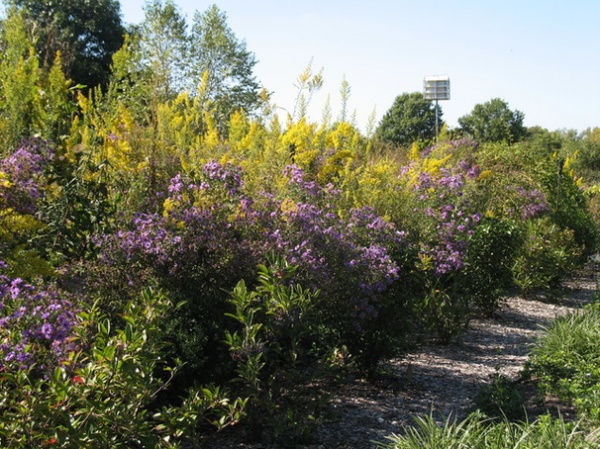
Planting notes. Showy goldenrod will grow nicely in dryish, low-fertility soils. Excessive moisture or fertilization will result in excessive growth. Plants will spread by reseeding or vegetatively though their rhizomes. Mature seeds have fluffy white bristles attached, which help the seeds catch the wind. If spreading is an issue, plants should be deadheaded before the seeds ripen and extra plants dug out. I’ve grown this species for several years and have not encountered excessive reseeding far from the parent plant.
Plants and seeds are available from mail-order nurseries featuring native plants. Check with local native-plant nurseries for availability, and look especially for plants grown from a local seed source.
Pollinator notes. Showy goldenrod attracts butterflies and is very popular with native bees. Goldfinches and prairie chickens will feed on the seeds.
Shown: Showy goldenrod with New England aster in the Lopata Prairie Garden at the Missouri Botanical Garden
More
6 Native Goldenrods Worth a Second Look
See more ways to garden for birds and butterflies
Related Articles Recommended












